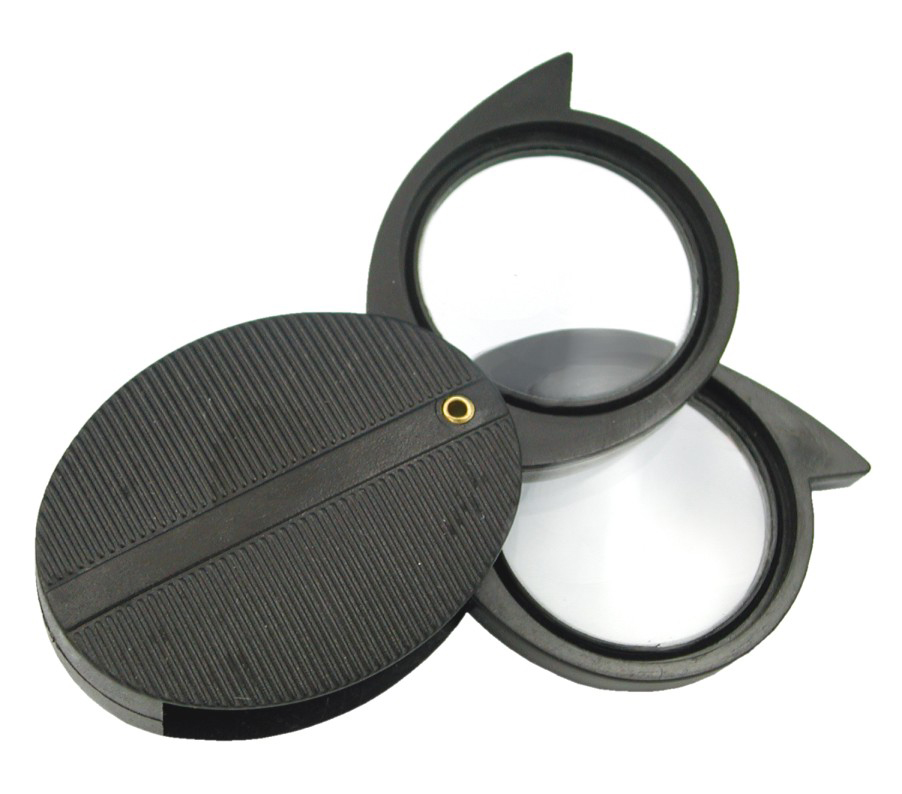Add a hand lens to your field backpack
by Claudia Larsen
Artists view wildflowers as fields of color, variations of shape and form that may be depicted through the artist’s creative vision. Sweeps of yellow may suggest sunflowers, goldenrod or Coreopsis to the viewer. But scientists view wildflowers with exacting parameters and measurements that record everything crucial to each flower’s necessity for competitive growth and reproduction.
If you have ever walked a trail with a botanist to discover and name each flower you pass, you realize the importance of plant morphology in the taxonomic routine of plant identification. Not only do the “small parts” of each flower and leaf provide clues to each plant’s identity and separate members of the same genus and family, they also show the evolutionary trends that forced that species to specially adapt for survival.
What do I mean by that?
To tell the difference between meadowbeauties (Rhexia spp.), you must observe much more than the color of the flowers, which occur as yellow, pink, purple or white. Are flower anthers curved or straight? Are the bracts below the flowers leaflike (foliacious)? Is the stem smooth (glabrous) or hairy (with trichomes)? How about those seeds — are they wedge-shaped or coiled like a snail (cochleate)?
You will never look at a flower the same way again after you have looked at it through a magnifying hand lens! OK, most of us may not want to spend tedious hours dissecting plant parts on a three-hour journey through deerfly-infested woods in 90 degree heat only to come to the conclusion that you might be looking at the remains of either a Rhexia cubensis or a Rhexia nashii. But trust me, having a quick look at flowers along the trail with your lens will add a whole new dimension to your experience.
So what do you need?
Magnifying loupes are often used by jewelers to inspect and grade gems for clarity, color and cuts, but our gems are wildflowers with many interesting characteristics too small for viewing with our eyes.
Magnifiers may be single lens, a doublet with two lenses, or a triplet with three lenses stacked together. Price varies with quality, but even a $3 plastic lens can be a great tool for kids of all ages.
- Nikon and Coddington both offer a single lens with a special groove around the circumference that gives a corrective effect for optical aberrations.
- Coddington also offers a doublet lens.
- Triplets are true 3-lens magnifiers that are placed together in a way that corrects distortion and color problems. Black framing around the lens helps eliminate reflections that alter the colors you are viewing. Bausch and Lomb offers the Belomo Triplet ($35-$40) and Hastings triplet ($50-$75). There are many lower priced options as well.
Hand lenses are available online, at natural history museums, in college bookstores and in some office supply stores.

Magnification tips:
Loupes are labeled with a number, followed by the symbol “X,” which means “times.” For example, a 2X loupe makes an object appear two times its actual size, and a 5X loupe shows you a five-time increase. Lenses are available to 30X, but most consider 10X acceptable since the stronger sizes have smaller fields of view.
You may hear new terms when you shop for a loupe. Three important terms are:
- Focal length: The focal length is the distance that you can hold the loupe from an object in order to get the best focus and magnification. As magnification powers increase, focal length decreases.
- Field of view: This refers to the size of the area you can see through the lens. The diameter of the lens affects the field of view, but so does magnification power. The higher the power, the smaller the field of view.
- Depth of field: This characteristic tells you how far you can move the loupe towards or away from an item and still have the item in focus. The higher the power, the shorter the depth of field.
Tips on use in the field:
- When using your lens, hold the lens close to your eye and bring the flower up to your face to view it.
- To avoid losing your magnifier, wear it around your neck on a lanyard for safekeeping. You’ll use it more often if you don’t have to dig it out of the bottom of a bag.
- Enjoy your new close-up world of petals, stamens, pistils and more!
